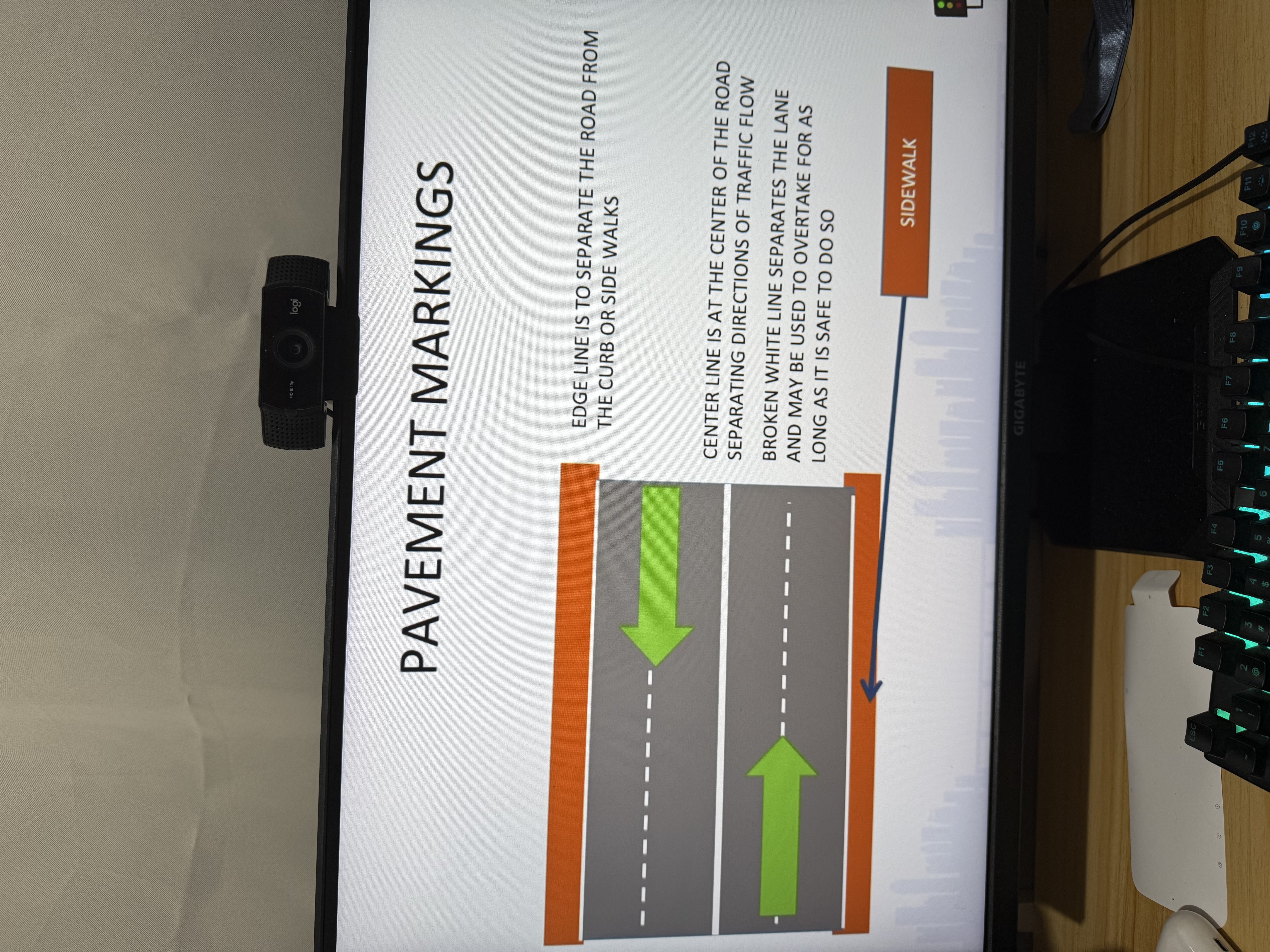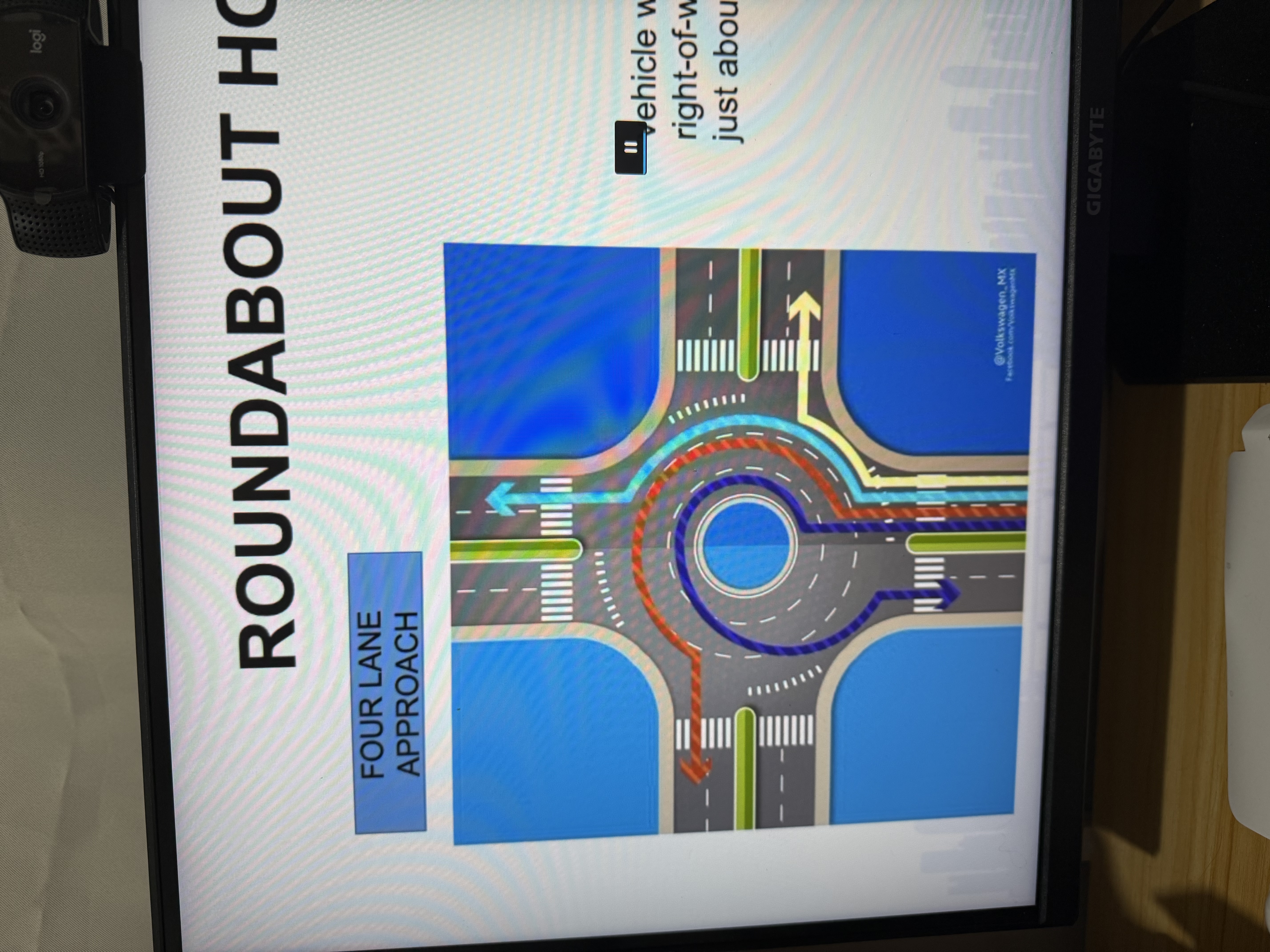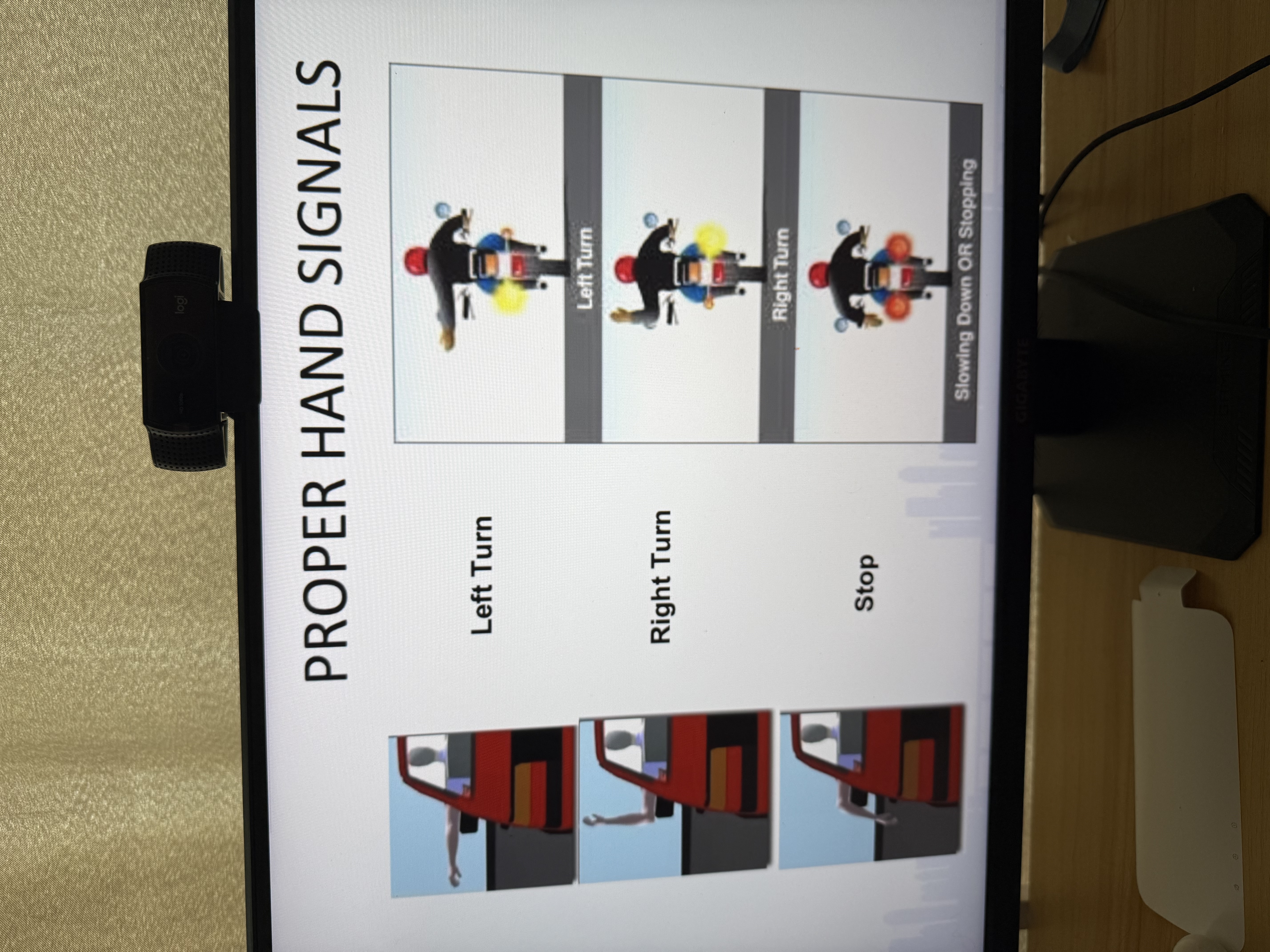pavement markings and signals
1/38
There's no tags or description
Looks like no tags are added yet.
Name | Mastery | Learn | Test | Matching | Spaced |
|---|
No study sessions yet.
39 Terms
Pavement markings

Solid white line
Lane divider near pedestrian or intersection
Solid yellow line
Overtaking from both directions is prohibited. Crossing movement is allowed
Broken and solid yellow lines
Passing is permitted on the side of the broken line but not on the side of the solid line
Double solid line
Overtaking from both directions are prohibited including cross movement are prohibited
Continuity line
The lane you are in is ending or exiting and that you must change lanes if you want to continue your current direction. If the continuity lines are on your right, your lane will continue unaffected
Transition lines
Used to safely past obstructions on roadways such as islands, median strips, bridge piers. Indicate changes in width
Give way or holding lines
Markings consisting of two adjacent broken white lines across the carriageway at which drivers must give way to all traffic in accordance with the standard signs
Roundabout holding signs
Vehicle within the rotunda have the right of way over vehicles which are just about to enter

Signalized pedestrian lane
Have traffic lights and markers and cars have right of way
Non signalized pedestrian lane
Cars must give chance to pedestrians since there are no traffic lights
Turn line
Is used to guide vehicles through a turning movement at intersections
Loading and unloading bay lane line
Used to indicate proper location of loading and unloading for PUV
-unbroken white or yellow line
Parking bay
Used to park
Rumble strips
Horizontal white lines that are slightly raised
Gives warning
Curb painting
For drop offs and pickup zones
Yellow curb painting
No parking but loading/unloading is okay
Red curb painting
No parking and loading/unloading
Railroad crossing ahead
White X mark labeled with R on left and right
Pavement arrows
Are used for lane control and white in color
Speed limit at 60kPH
Speed limit signs in certain locations
Object markings
Mark obstructions/ usually painted in black or white or yellow stripes
Bus and PUJ lane
Unbroken yellow line used to separate other vehicles from PUVS
Flashing green light
Permits vehicle facing that signal to turn left, right or forward while opposing traffic faces a red signal
flashing yellow beacon
Motorists can continue to drive but with caution
Flashing red signal
Means the vehicle should stop and only proceed when it is safe to do so
Proper hand signal

Section 37
Every driver shall pass to the right when meeting persons or vehicles coming towards him.
To the left when overtaking persons or vehicles going the same direction
look at REAR view mirror for overtaken car
Look at rear to check for other overtaking card
Section 39
If you want to overtake, need to go to left lane
Section 40
Driver give way to overtaking vehicle
Section 41
Restrictions on overtaking and passing
Should not pass the center line (no counter flow)
No overtaking if there is a curve or uphill since highway is obstructed within 500 feet
Section 42
Right of way
Section 45
Turning at intersections
Yellow box prohibitions
No blocking intersection
No u turns
Do not park within 6 meters of the intersection
Section 46
Parking is prohibited:
1) within 6 meters of intersection
2) in front of private driveway
3) within 4 meters from a fire hydrant
4) on a crosswalk
Section 51
No hitching for any MV
Use of red flags
If there is cargo one meter longer than the vehicles
Section 52
No person shall drive or park along any sidewalk, path, or alley
Section 54
Driver must not use his vehicle in a manner to obstruct any passage of any vehicles